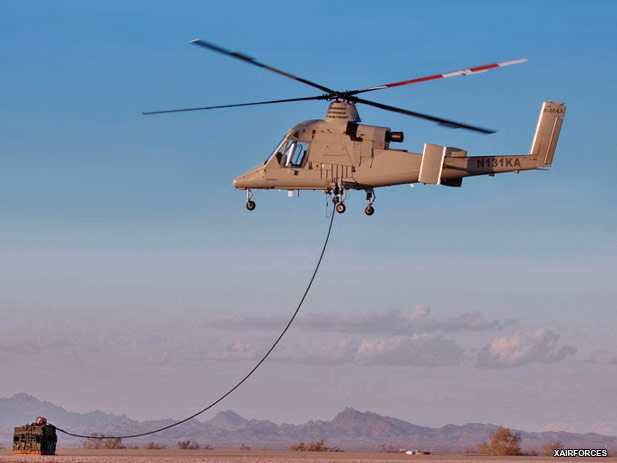
Army Enlisting Unmanned Systems for Supply Missions

Lockheed Martin to develop, deliver autonomous technologies to make cargo supply safer and cheaper
Just as the airplane dramatically changed the face of warfare during World War II, unmanned systems are significantly altering how the military conducts operations today. The aerostat-based Persistent Threat Detection System, unmanned aerial vehicles like the Desert Hawk and other autonomous systems are proving their value on a daily basis in Iraq and Afghanistan.
And now, the U.S. Army wants to expand its use of unmanned systems even further. The Army's Aviation Applied Technology Directorate recently awarded Lockheed Martin a $47 million contract to develop, demonstrate and deliver autonomous technologies for unmanned air systems in support of in-theater cargo missions.
Afghanistan's treacherous terrain makes supplying remote operating bases either over land or through the air costly and dangerous. Unmanned systems will enable the Army to supplement rotary wing assets, reduce exposure to improvised explosive devices and decrease transportation costs. The Army wants mature technologies that improve autonomous operations, increase delivery accuracy and reduce ground control station operator workload.
Under this contract, Lockheed Martin and its partner Kaman Aerospace will demonstrate intelligent autonomous technologies for unmanned aerial systems using the K-MAX helicopter platform. Lockheed Martin and Kaman also are working with the U.S. Navy to demonstrate the unmanned K-MAX's capability to supply the Marines.
"Lockheed Martin's experience, resources and proven K-MAX platform will allow us to meet the Army's objectives," said Dan Spoor, vice president of Aviation Systems at Lockheed Martin. "We are eager to develop and demonstrate the latest autonomous technologies using the mature and low-risk K-MAX platform."
The 6,000-pound K-MAX can fly at a higher altitude with a heavier payload than any other rotary wing unmanned system. With its four-hook carousel, the unmanned K-MAX can also deliver more cargo to more locations in one flight.
Lockheed Martin and Kaman entered into a partnership in 2007. For its Navy contract, the team has met all milestones and recently successfully completed Electromagnetic Environmental Effects (E3) testing. As part of the Navy and Marine Corps Cargo Unmanned Air Systems program, the K-MAX unmanned helicopter is currently undergoing a Quick Reaction Assessment at Yuma Proving Grounds in Arizona. This assessment will demonstrate the aircraft's cargo-carrying capability in an operational environment.
Source: Lockheed Martin Corporation
Photo: The U.S. Army awarded Lockheed Martin a $47 million contract to develop, demonstrate and deliver autonomous technologies for unmanned air systems, such as those on the K-MAX unmanned helicopter, above, in support of in-theater cargo missions. (www.lockheedmartin.com)
(28.08.2011)
|